Log in or create new account to save this product to your wishlist.
Fertilising your Lawn: why, how and when? – The complete guide
This article is all about the art of fertilising your lawn. We’ll explain how much to use, how regularly, which fertilisers to use, and what you can expect from well-fed grass plants.
Latest articles
7 MIN 22 Jul How to keep your lawn in shape this summer 9 MIN 15 Jul Watering Your Garden: 10 Top Tips! 11 MIN 15 Jul Is Your Grass Type Right for your Garden? 11 MIN 10 Sep Create Your Low-Maintenance Garden – Tips and Ideas 11 MIN 08 Sep The Ultimate Guide to Choosing the Perfect Hedges for Your Garden 12 MIN 30 Aug The Top 20 Evergreen Climbers to Transform Your GardenWe all know that fertilising your lawn is recommended. But some people are – well, let’s just call them “fertiliser deniers”.
- What are fertilisers?
- Fertilising your lawn with manure
- Synthetic fertilisers for your lawn
- The NPK composition in a lawn fertiliser
- NPK – what does it mean?
- Why fertilise your lawn?
- 4 Reasons to Fertilise Your Lawn
- When and how often should you fertilise your lawn?
- The best time of year to fertilise your lawn
- Suitable conditions for fertilising your lawn
- Organic fertiliser versus artificial/mineral fertiliser
- Granular fertilisers versus liquid fertilisers
- How do you fertilise your lawn? 5 simple steps for successful fertilisation
- What do you need to fertilise your lawn?
- 3 golden tips: Before & After fertilising your lawn
- Where do I buy lawn fertiliser
- FAQ
Sure, your grass will grow without feeding. And it might look OK. But, with time, the soil’s nutrient levels become depleted, and there’s only so much time your grass plants can survive on borrowed time.
And while there’s such a thing as over-fertilising, there’s also the more common condition: under-fertilising.
This article is all about the art of fertilising your lawn. We’ll explain how much to use, how regularly, which fertilisers to use, and what you can expect from well-fed grass plants.
What are fertilisers?
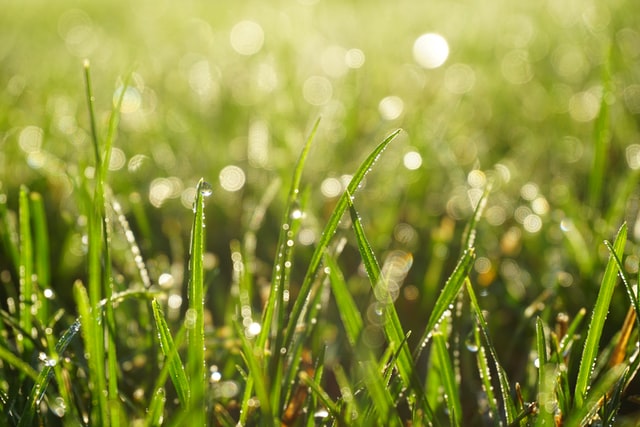
A fertiliser is a natural or synthetic material that you apply to your soil to supply nutrients.
Most modern fertilisers are a mix of compounds that provide a range of nutrients, including:
- Nitrogen (N)
- Phosphorus (P)
- Potassium (K)
Fertilisers help return the nutrient balance to your soil, but they can also act as soil improvers – lightening heavy soils to improve drainage and helping sandy soils to retain more moisture.
Fertilisers traditionally came from organic sources. That’s poo, in short.
Fertilising your lawn with manure
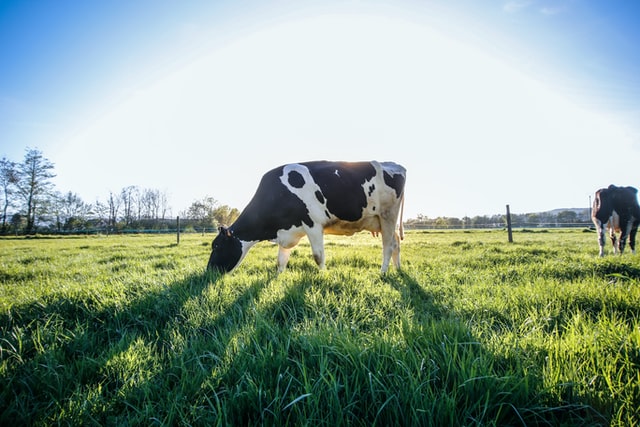
A range of animal manures, such as horse- and chicken, are exceptionally high in nutrients. But manure is only at its most beneficial if the “producer” was a natural plant-eater.
We hope you’re not eating because this is going to get a little gross. Put your sandwich down!
Because:
Traditionally, we used human waste to irrigate and fertilise crop fields. And we’re not just talking about the “olden days” here: sewage is still used to irrigate and feed crops in the developing world where there’s no access to fresh water.
Arguably, getting grosser still, the byproducts of fish- and meat processing are great for fertilising crops. Fish, blood, and bonemeal all make very effective plant fertilisers.
OK,
it’s safe to go back to your sarnie.
Synthetic fertilisers for your lawn
Synthetic fertilisers were first used in the 19th century and have resulted in some fairly wide-reaching environmental consequences, including contributing to global warming. However, we’re talking on an industrial scale here – the impact of fertilising your lawn will have minimal impact.
Of course, there’s always organic fertilisers such as homemade compost and leafmould. But for your lawn, there’s a range of low-impact fertilisers that produce outstanding results for greener, lusher grass.
The NPK composition in a lawn fertiliser
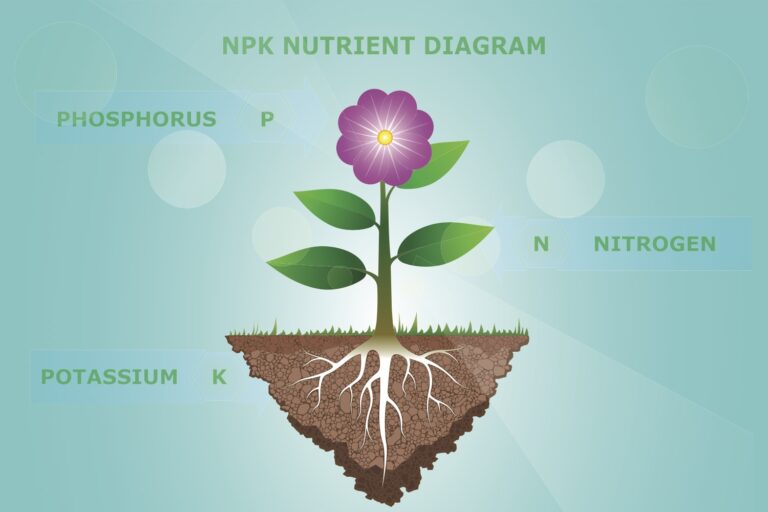
All good fertilisers confirm their chemical composition on the packet in the guise of an NPK number.
As mentioned above, N is nitrogen, P is potassium, K is phosphorus.
Nitrogen
Nitrogen is probably the most important of all the elements for plant development and a significant part of the chlorophyll, which adds the green colour to plant life. It boosts growth and helps develop the density of your lawn.
Adding too much nitrogen through over-fertilisation results in rapid growth but a compromised root system and leaf scorch. Too little nitrogen makes the blades turn yellow.
Potassium
Potassium helps your grass plants take in water and nutrients, creating starches and proteins that power the plant’s growth. It helps build thicker cell walls, boosting health and resistance to extreme weather and disease.
Phosphorus
Phosphorus supplies the energy to develop deeper roots and blade density. It’s needed in the spring when it wakes up from its winter dormancy.
NPK – what does it mean?
When you look at your fertiliser packet, you’ll notice the NPK number expressed as a ratio.
For example, MOOWY’s Spring Boost has an NPK ratio of:
12-5-5 +2% Mg0
The NPK is always expressed in the same order – N first, followed by P, then K.
So, that means that Spring Boost contains 12% Nitrogen, 5% Potassium, and 5% Phosphorus.
This particular product also includes 2% Magnesium Oxide (Mg0), which stimulates the cell structure while boosting photosynthesis, giving your spring lawn a much-needed deep boost of green.
Why fertilise your lawn?
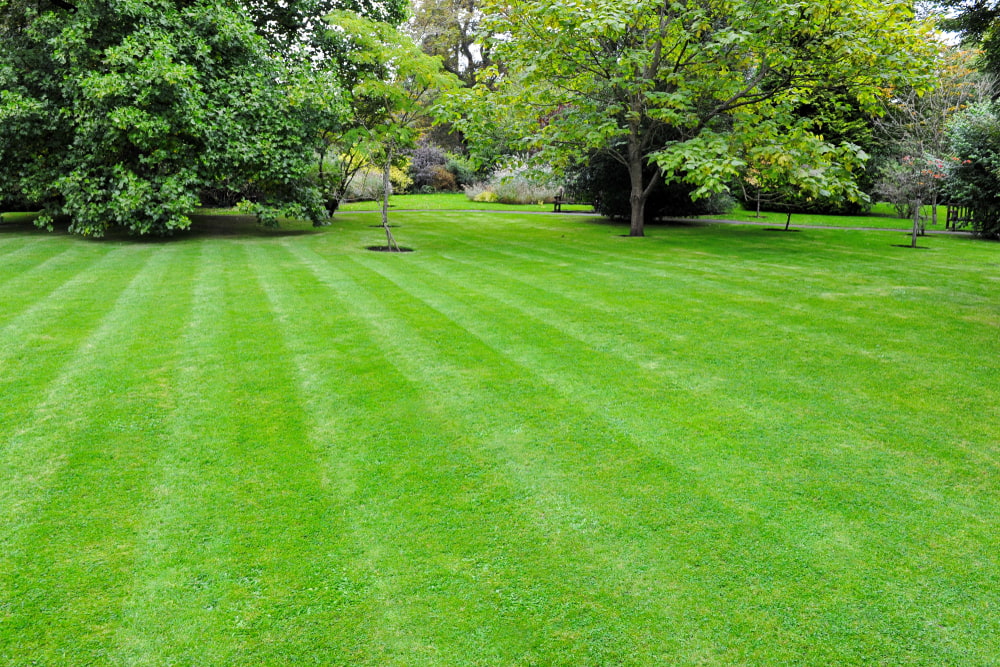
Grass in the countryside seems to get along quite well without the need for chemical assistance. In the wild, grass blades find their own height and hold onto the sugars produced through photosynthesis. These sugars nourish the plant, making it strong and resistant to disease.
But we mow a domestic lawn. And this leads to a loss of the sugars the grass plant needs to thrive.
Think about it:
- The grass plant extracts minerals (or nutrients) from the soil to thrive
- The glass blades produce sugars with the help of light, carbon dioxide, and water
- The grass grows, storing the sugars in the leaves
- We cut it, depleting the plant of its nutrients
- The plant extracts more minerals from the soil
- Etc.
Basically, by mowing our grass, we’re stripping the plant of its sugars, meaning it needs to extract more nutrients from the soil to reproduce the sugars it needs. However, in the wild, there’s a balance between the blade’s longevity and the soil nutrients. In gardens, we force the plant to strip the soil.
This process impoverishes your soil. By fertilising, you replenish those essential nutrients.
So:
4 Reasons to Fertilise Your Lawn
Fertilising Your Lawn to Overcome the Vicious Circle
We mow our lawns because it looks neater, but it also helps our grass plants absorb more light. When the grass is long, only the blade tips have direct access to light, which means that the sun is exposed to a relatively small surface area in comparison to the overall length of the blade.
However, by mowing, more of the grass plant is exposed to the light – and that’s good.
But, of course, there’s a pay-off: the vicious circle of growing and mowing.
By mowing, we’re forcing our grass plants to strip the soil of its nutrients to recover.
Remember:
Grass is a plant. It needs to recover from the damage of intensive use and regular mowing.
Mulch is a natural fertiliser
Many lawnmowers collect grass clippings as they go. But the clippings can act as a natural fertiliser. In fact, grass clippings contain everything your grass plants need (because, after all, they produced them!).
When you mulch correctly, the chopped-up leaves contain everything you might get in a shop-bought fertiliser (and there’s hardly any impact on the planet). Grass clippings contain around 4% nitrogen, 2% potassium, and 1% phosphorous – the nutrients contained in fertiliser.
But:
The clippings need to be small enough to settle below the lawn’s surface. Clumps of grass leaves sitting on top of your lawn will smother your grass plants and cause disease.
You can get a special mulching blade for your lawnmower. However, if you mow regularly enough, the surface tips will be short enough to sink to the earth.
Fertilising your lawn to promote recovery
Now, this is the real reason we fertilise: to help our grass plants recover from the trauma of cutting and intensive use.
Robust and healthy grass is more resistant to heavy use and cutting. So, by applying suitable fertilisers, you provide strength and resilience to your lawn. And well-fertilised grass is more resistant to disease and weed invasions.
Weak grass is an open invitation to weeds and moss – they love a patchy lawn that’s hanging on by a thread for dear life.
Fertilising your lawn for aesthetics
Fertilising your lawn helps your grass plants grow more evenly, preventing bald spots and patches of weeds and moss. But fertilisers do more than just strengthen the plants: they help your lawn to develop a rich, deep green colour as well as a lush texture.
Well-fertilised grass plants have a tighter root structure, creating more blades; leaving less space for weeds.
When and how often should you fertilise your lawn?

Most people don’t fertilise their lawns at all. And you can probably tell the difference between a lawn that’s been left to nature and one that’s been well-cared for (excuse the passive-aggressive tone! 😉 )
For good results, we advise that you fertilise your lawn at least twice a year – in spring and autumn.
However, for optimal results, we recommend fertilising three to four times a year:
In the spring, late summer, autumn, then a final feed before winter kicks in.
You can, of course, buy all-purpose fertilisers that can be used throughout the year. But your lawn needs different nutrient boosts depending on:
- the weather
- the amount of sunlight it gets
- the amount of rain, and
- the intensity of use
The best time of year to fertilise your lawn
Early spring (February/March) – Spring Boost fertiliser gives your lawn everything it needs as it awakens after winter hibernation. A high nitrogen level (12%) helps kickstart growth and return a deep green colour; the added bonus of Magnesium Oxide boosts photosynthesis, restoring your grass after the winter months.
Avoid applying spring fertiliser too early – it stresses the grass plants. Wait until your daffodils have emerged – that’s a good indicator that your lawn is ready for its first feed of the year!
Spring (March/April) – You shouldn’t over-fertilise, so if you already fed your lawn in February, then you don’t need this second feeding. But if you didn’t fertilise in Feb, then feed between March and April.
Mid-Summer (July) – Your lawn experiences its most intensive use during the summer, so an optional additional feed in July could help improve resilience and deepen the green colour while the weather is at its hottest. Leave it 10-12 weeks after your spring feed. A slow-release fertiliser is good at this time of year – try MOOWY’s Long Lasting Lawn Fertiliser. This feed will protect your lawn from heat and minimise growth, so you won’t need to mow as often.
Autumn (Sept/Oct) – What for the weather to turn autumnal. It felt like autumn was quite late in 2021, so go with October if it’s still unseasonably warm. Your autumn feeding helps your lawn recover from the heavy use and drier summer weather, preparing it for the harsher winter. While mid-summer is an optional feed, don’t miss the autumnal fertilisation.
Winter (Nov/Dec) – Prepare your lawn for winter tolerance with a final feed, 10-12 weeks after your autumn application. Make sure it’s before the first signs of frost.
Applying an iron-sulphate-containing fertiliser will help prevent moss and disease throughout the winter. Try MOOWY’s 2-in-1 Moss Killer and Fertiliser both at the beginning and the end of winter.
Suitable conditions for fertilising your lawn
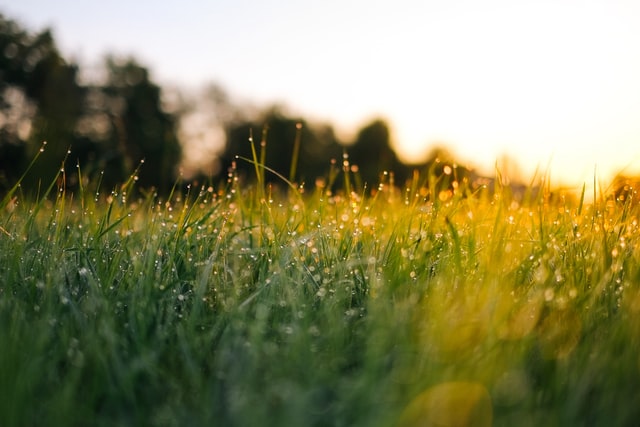
Make sure the soil is moist, and your grass is actively growing before feeding. Sprinkle your fertiliser after cutting your lawn, giving the granules time to settle down to the soil before the next cut.
Most slow-release or granule-type fertilisers need watering after application. Make sure you read the instructions.
Don’t apply granular feed to wet grass – it will stick to the grass and scorch the blades. You want the feed to get down to the surface layer.
Save time after fertilising by feeding before rain is due. That way, you don’t need to water the feed into the soil.
Organic fertiliser versus artificial/mineral fertiliser
Organic fertilisers are made from decomposed materials that were once alive – that’s plant life before you call the Vegan Police on us. 🙂
Compost is decomposed “fallen” matter – that’s fallen leaves, branches, and food waste that you pile into your compost heap. Compost contains similar nutrients that you find in manufactured fertiliser, but it has been stored within the fallen organic matter.
Organic fertilisers contain beneficial microbes which help improve the soil, making it easier to work. However, organic fertilisers are often more expensive if you buy them in packs – they’re less concentrated, meaning they contain fewer nutrients by volume than inorganic feeds.
Inorganic fertilisers are incredibly effective because they’re manufactured to precise levels of mineral composition. Manufactured fertilisers tend to work more quickly, with longer-lasting results.
Granular fertilisers versus liquid fertilisers
Ah, that old chestnut… Which is better: granular or liquid lawn feeds?
Well, the jury is out, tbh – it’s more to do with personal preference, really. However, here’s our handy, balanced, ready-reckoner to help you decide which is best for you.
| GRANULAR FERTILISER | LIQUID FERTILISER | |
| EASE OF USE | You need a broadcast/drop spreader | Mix with water in the watering can, ensuring correct dosage. Some bottles provide hose-end sprayers for faster application. |
| EFFICIENCY | Nutrients gradually release into the soil | Liquid quickly absorbed into the ground. |
| RATE OF ABSORPTION | Slow-release. Nutrients last for a more extended period. | Most liquid fertilisers are quick-release, meaning more regular feeding. |
| COST | Usually cheaper than liquid fertilisers. | Usually a little more expensive than granular fertilisers. The pack doesn’t usually last as long. |
Granular fertilisers are usually cheaper (and last longer) than liquid fertilisers. The results of liquid feeds are generally more rapid, but the effects last for a shorter period than granular feeds.
MOOWY granular fertilisers are mainly slow-release but show results in around 7-10 days. However, they keep feeding your lawn for about 60 days, so you don’t need to feed as often.
You can walk on your grass straight after application with our granular feeds. Some liquid feeds need to settle for a couple of days before you can walk on the grass – otherwise, you risk burning the leaves, leaving black footprints on your lawn.
How do you fertilise your lawn? 5 simple steps for successful fertilisation
These instructions are suitable for granular feeds. For liquid feeds, read the instructions on the bottle.
- Step 1: Timing– make sure the grass is dry before you lay fertiliser, and avoid the midday sun. The late afternoon is usually best.
- Step 2: Preparation – Remove leaves and twigs from your lawn and mow the grass.
- Step 3: Calculate – weigh out the correct amount according to the size of your lawn. As a rule of thumb, measure out 25g per square metre.
- Step 4: Distribute – divide your fertiliser into two equal parts and sprinkle lengthways, then widthways.
- Step 5: Water – activate the fertiliser by watering your lawn after distribution. Use a gentle stream of water, so you don’t disturb the grains too much.
What do you need to fertilise your lawn?
Have everything close by when you fertilise. That way, you’ll get it done more quickly.
You’ll need:
- Lawnmower – mow BEFORE you fertilise.
- Weighing scales
- Your fertiliser, weighed out. Remember, MOOWY fertilisers come in resealable bags, so you can reseal and store if you have any left over.
- Spreader or hand spreader
- Garden hose
3 golden tips: Before & After fertilising your lawn

- Tip 1: Never over-fertilise. Adding more feed doesn’t necessarily provide more effective nutrition. You can burn the grass blades with too much fertiliser.
- Tip 2: Never top up your spreader on your grass. Fill your spreader in your shed. If you spill granules when filling the spreader, areas of your lawn could burn from over-fertilisation.
- Tip 3: Don’t mow straight after feeding. Wait at least 3-to-4 days after fertilising before you cut again.
Where do I buy lawn fertiliser
Fertilisers are widely available from garden centres and online. Check out MOOWY’s online shop for premium-quality lawn feeds and treatments.
Ready to start feeding your lawn? Or do you have more questions?
We hope you’ve got all the information you need from this article. But if you have any questions, please don’t hesitate to get in touch.
We love hearing from you, so just ask if you want more advice or suggestions for an amazing lawn.
Thanks for reading!
FAQ
Granular feeds offer slow-release fertilisation for your lawn, meaning you don’t need to feed as often. Liquid feeds are faster acting but need a more regular application for sustained results.
Feed your lawn with a high-quality lawn feed at least twice-a-year. Once in the spring, then again in the autumn. For optimal results, also feed mid-summer and again before the first frost.
If you want a healthy, weed- and disease-resistant lawn, you need to fertilise the soil. Unfertilised grass becomes patchy, full of weeds and moss, and is prone to disease.
A high-quality weed-and-feed can benefit the resilience of your lawn. If you use a weed-killer fertiliser mix, ensure you overseed the patches left behind by the dead weeds to prevent them from growing back.
Leave a comment
Your answer will be displayed on the site and the interested party will be notified by email.
Leave a comment
Have a question or want to share your experience? Leave us a comment.
Read more
The best tips and tricks for a lush green lawn
 Scarifying Kit
All products after scarifying | Quickly restores the lawn after scarifying | Outsmart weeds quickly with the use of this kit
From: € 39.99
Scarifying Kit
All products after scarifying | Quickly restores the lawn after scarifying | Outsmart weeds quickly with the use of this kit
From: € 39.99
 Spring Lawn Care Kit
MOOWY’s choice for the spring | Quick recovery of your lawn after winter | A strong lawn prevents weeds
From: € 25.99
Spring Lawn Care Kit
MOOWY’s choice for the spring | Quick recovery of your lawn after winter | A strong lawn prevents weeds
From: € 25.99
 Long Lasting Lawn Fertiliser
Effective for 90 days | See results in 14 days! | Suitable for all types of grass and soil
From: € 13.99
Long Lasting Lawn Fertiliser
Effective for 90 days | See results in 14 days! | Suitable for all types of grass and soil
From: € 13.99
Do you want a lawn calendar?
🌱 All important maintenance moments for your lawn during the year. Leave your email and we will send you the lawn calendar for free.
Enter your email
Receive the lawn calendar in the mail
Enjoy a green lawn all year round!



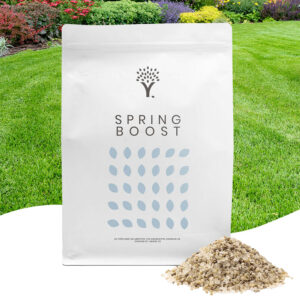
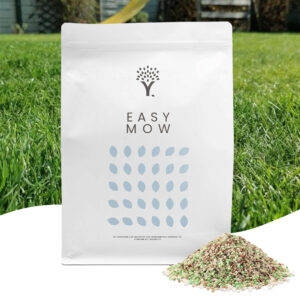
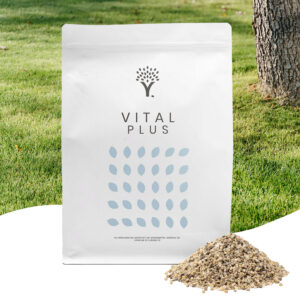

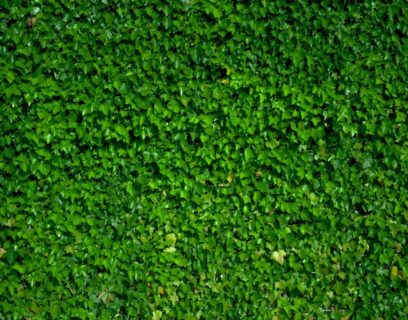
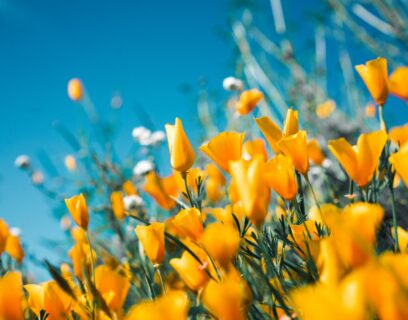
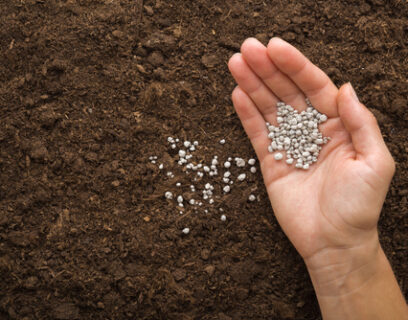





Comments (0)
There are no comments yet. Well then, what are you waiting for to
Be the first to write your comment!inaugurate this pretty page?
Do you have some comments?